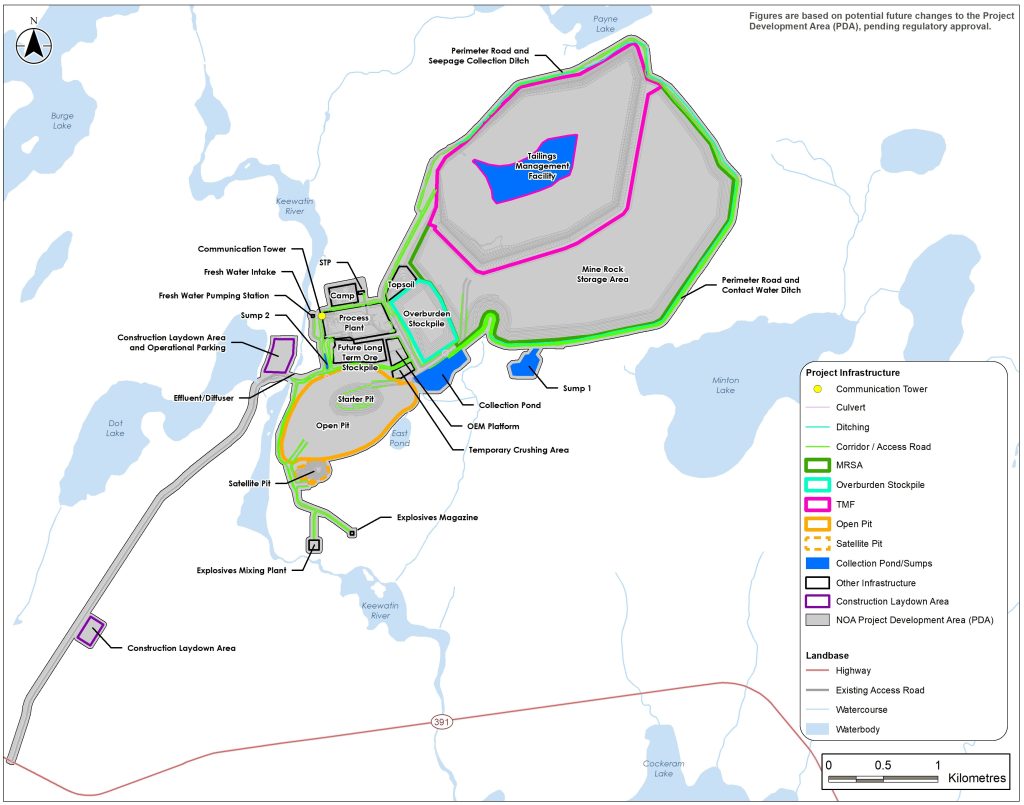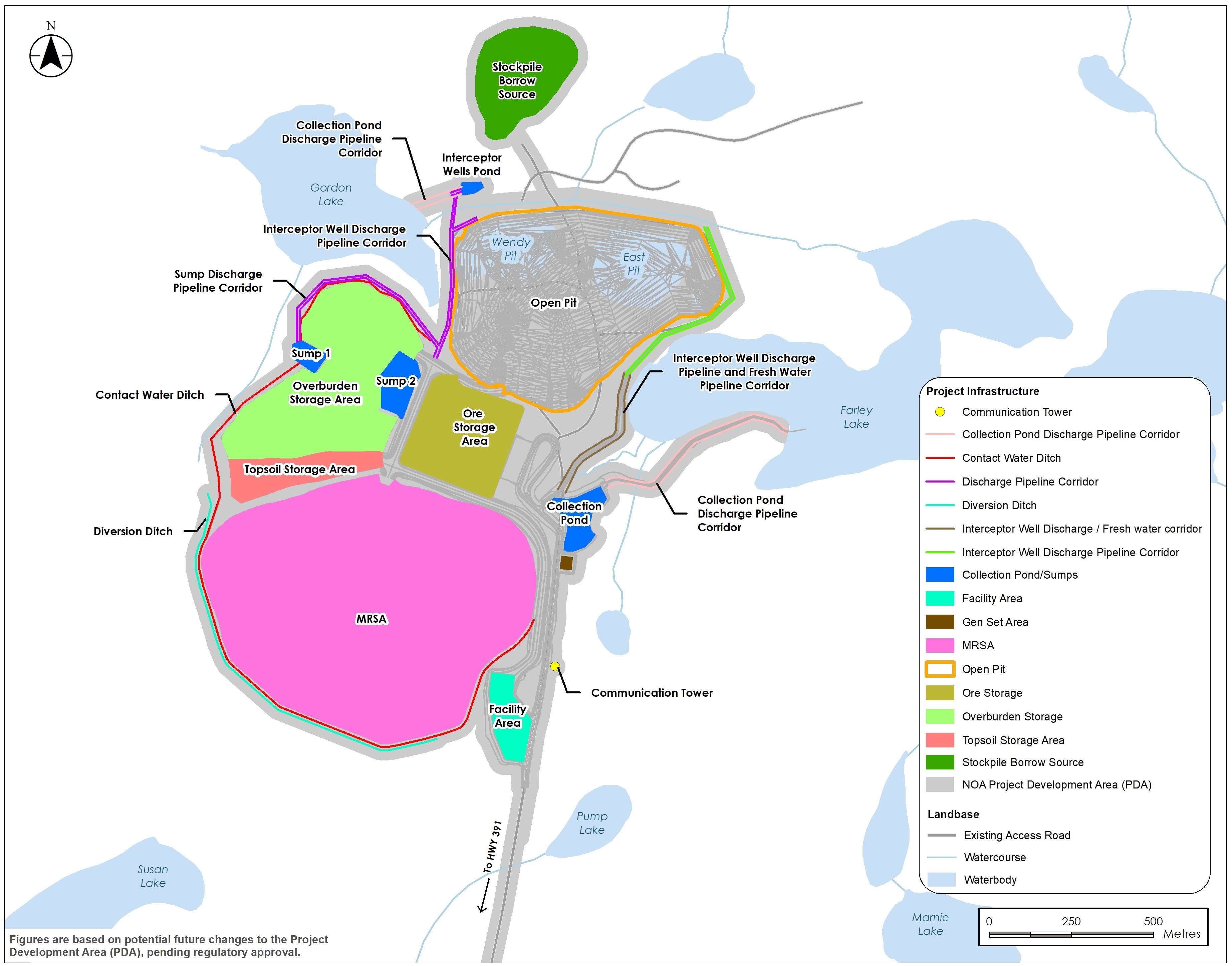Lynn Lake Gold Project
Alamos Gold acquired the Lynn Lake Gold Project in 2016. Located approximately 1,000 kilometres north of Winnipeg, near Lynn Lake, Manitoba, the Project consists of two primary gold deposits – the Gordon and the MacLellan deposits. Both sites were once producing gold mines and Alamos Gold intends to revive the industry by constructing, operating, and eventually reclaiming open-pit gold mines at both historical locations. The Project is designed with a mill throughput rate of 8,000 tonnes per day, supporting a 17-year Mineral Reserve life. Components of the project would include new mine infrastructure, open pits, an access road, a central ore milling and processing plant, ore stockpiles and mine rock storage areas, and a tailings management facility.
The Environmental Impact Study was submitted in May 2020 to satisfy federal and provincial environmental assessment requirements and in March 2023 received a Positive Decision Statement by the federal Minister of Environment and Climate Change Canada. As well, in accordance with the Environment Act, the Province of Manitoba also issued Environment Act Licences for the MacLellan and Gordon sites. Having achieved these milestones, the Company is continuing to work towards obtaining other project-related permits
For details of the Project’s 2023 Feasibility Study Update, see the report here.
Quick Facts
- Ownership – 100%
- Location – Lynn Lake, Manitoba, Canada
- MacLellan deposit, 8km northeast of Lynn Lake
- Gordon deposit, 55km east of Lynn Lake
- Status – Permitting
- Operation – Open Pit, Milling
- Total Production
- Gold: 2,185,000 oz
- Silver: 2,623,000 oz
- Mine Life – 17 years of mineral reserve life
The Project has the potential to bring significant long-term value to local Indigenous Nations, communities, the Northern Region, the province of Manitoba, and to Canada. In addition to its gold production and taxes paid, the mine will employ local workers – prioritizing Indigenous candidates first – and create training opportunities to develop local talent. Based on an Economic Impact Assessment conducted in 2021, during the project construction phase, an average of 406 direct full-time jobs will be created by the mine, up to a maximum of 555 jobs at the peak of construction. Similarly, during operations which will be a minimum of 10 years, there will be an average of 412 direct full-time jobs and up to a maximum of 547 jobs. The project will also have a positive effect on the tertiary economy through indirect job creation and improvements to local infrastructure and services.
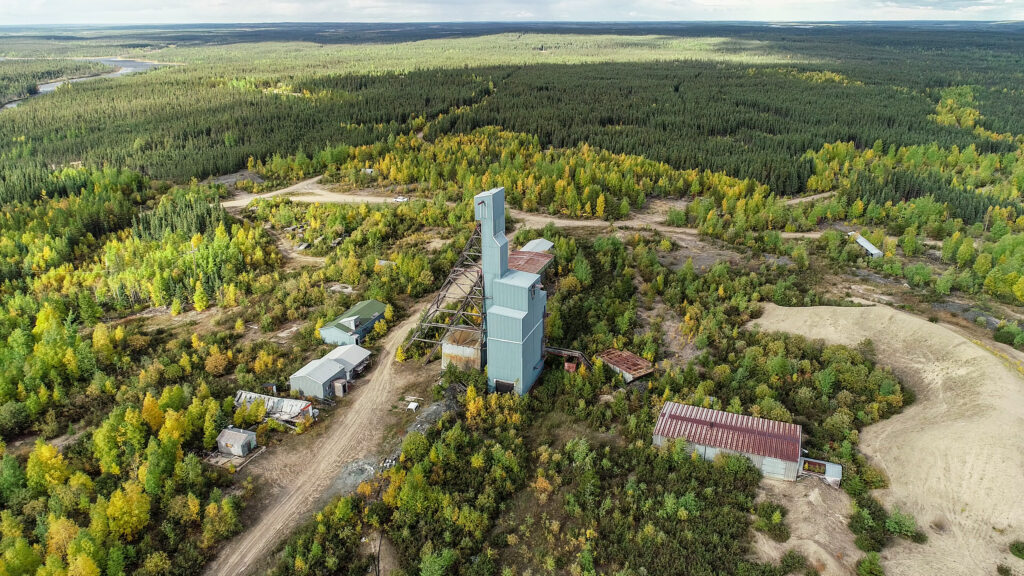
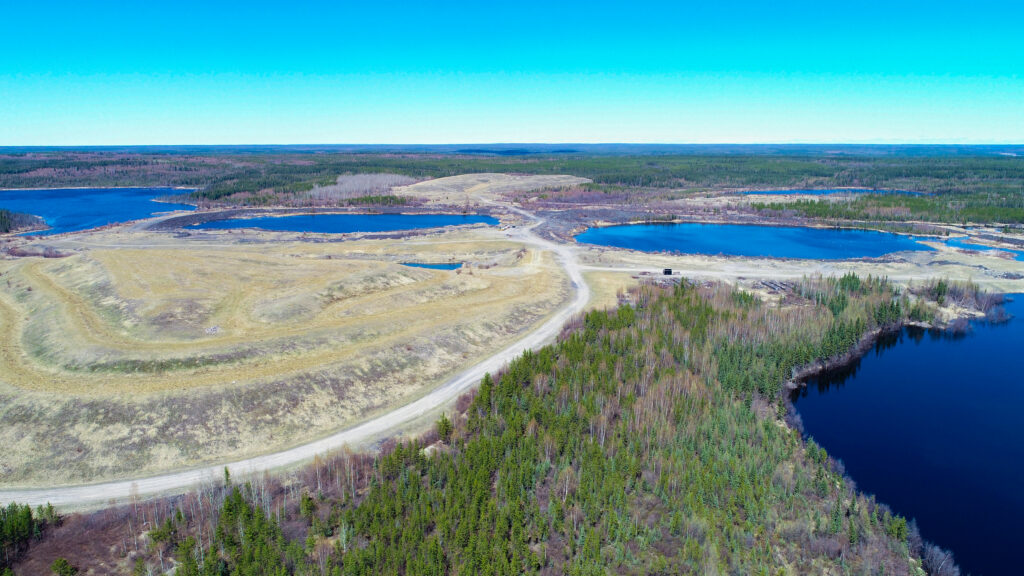
Project Highlights
The Lynn Lake Gold Project is forecasted to:
- Provide Manitoba approximately $1 billion (in terms of GDP), 69% of which will benefit Northern Manitoba’s development (estimated $664 million in GDP).
- Contribute over $415 million in total taxes, including provincial taxes.
- Generate 500+ construction-related jobs in the development of the project (over two years), including hiring in Northern Manitoba to fill these positions.
- Create an additional 400+ operational full-time employment opportunities, including training and hiring in Northern Manitoba to fill these positions.
- Present employment and economic opportunities to the surrounding Indigenous communities.
For more details, please see the Project’s Economic Impact Assessment
Location
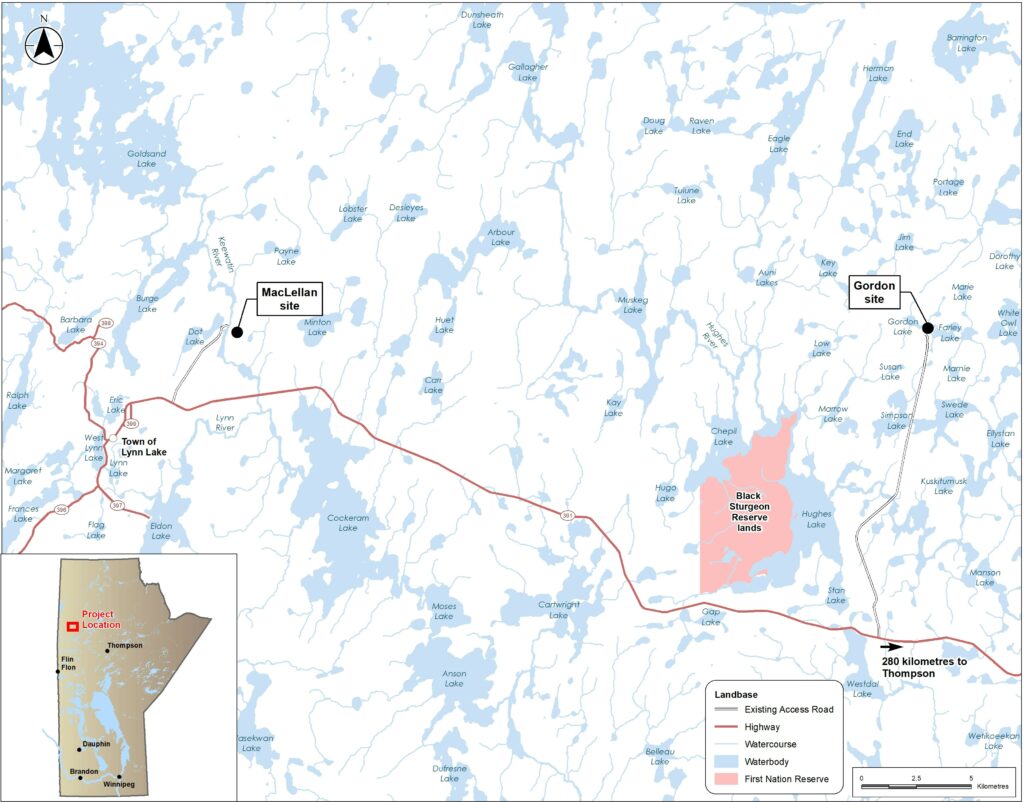
History
AuRico Gold acquired a 25% interest in the Lynn Lake project in 2014 by entering into a joint venture agreement with Carlisle Goldfields. The agreement provided AuRico with an option to earn up to a 60% interest by continuing to fund the project and delivering a Feasibility Study. Following Alamos Gold’s merger with AuRico Gold in 2015, Alamos Gold then acquired Carlisle Goldfields, consolidating full ownership of Lynn Lake. A positive Feasibility Study was completed on the project in December 2017. An updated Feasibility Study was published in August 2023 incorporating a larger Mineral Reserve supporting a larger, longer-life operation with attractive economics and significant exploration upside.
Geology & Mineralization
Regional Geology
The Lynn Lake Gold Project encompasses most of the east-trending, 125 km long, Paleoproterozoic Lynn Lake greenstone belt (LLGB) in northwestern Manitoba. Approximately 430,000 ounces of past gold production came from three mines, between 1986 and 1999, all of which are situated within the project boundaries. Steeply dipping volcanic, volcaniclastic and sedimentary rocks of the Wasekwan Group (1.91–1.85 Ga) occur in the north and south belts of LLGB, separated by large syn-volcanic granitoid plutons (Pool Lake suite, 1.89–1.87 Ga). The younger clastic sedimentary rocks of the Sickle Group (1.84–1.83 Ga) unconformably overlie the supracrustal rocks of the Wasekwan group and syn-volcanic plutons. A variety of post-Sickle (<1.83 Ga) stocks, sills and dykes occur within the supracrustal rocks. Mesoproterozoic Mackenzie diabase dykes (1.26 Ga) crosscut all other lithologies. The rocks have undergone greenschist to amphibolite facies metamorphism (peak at 1.81–1.80 Ga). Most supracrustal rocks are superposed by upright, isoclinal to tight folds and shear zones that are parallel to transposed stratigraphy. The former underground MacLellan and open pit Gordon mines are within the high strain Agassiz metallotect in the north belt. The former open pit Burnt Timber mine, and the nearby Linkwood deposit, are located along the regionally extensive Johnson shear zone in the south belt.
MacLellan Deposit
The former (1986-89) MacLellan underground mine is located seven kilometres northeast of the Town of Lynn Lake and is accessible by an all-weather gravel road five km north from Highway 391. The stratigraphy around the deposit consists mainly of ultramafic to mafic volcanic and volcaniclastic rocks, with minor slivers of intermediate to felsic volcaniclastic rocks, and sedimentary rocks within the Wasekwan Group. The west-southwest striking and subvertical succession is superposed by regional, isoclinal to tight, moderately to steeply northeast-plunging Z-folds, with north-facing long limbs and south-facing short limbs. Gold mineralization is hosted in biotite-sulphide-silica rich alteration zones and intensely folded and boudinaged quartz-carbonate-arsenopyrite veinlets within ultramafic to mafic coherent flows. The ore and alteration zones are strongly transposed parallel to axial plane cleavage of folds and shear zones along lithologic contacts. Ore shoots plunge steeply, coincident with nearby fold axes along the axial plane cleavage.
Gordon Deposit
The former (1997-99) Gordon open pit gold mine is located 37 kilometres east-northeast of Lynn Lake and is accessed by an all-weather gravel road that extends 14 kilometres north from Highway 391. The host rocks at Gordon mine consist mainly of oxide facies banded iron formation, with minor clastic sedimentary rocks and felsic volcanic rocks of the Wasekwan Group and a small diorite stock in the south. The oxide facies iron formation occurs north and south of an argillite-wacke unit situated in the core of an upright west-plunging isoclinal synform. Gold mineralization is hosted in quartz-pyrrhotite-pyrite veins and adjacent conformable sulphidation zones mainly within oxide facies banded iron formation. There are two dominant vein sets – one that is parallel to a subvertical east-striking foliation and a second set that dips moderately southwest at a high angle to the foliation.
Mining & Processing
The Gordon and MacLellan deposits will be developed using conventional truck and shovel open pit mining methods. They are expected to operate concurrently for the first six years of operation, with Gordon being depleted first given its higher grades and lower stripping ratio. As the Gordon pit nears depletion, mining equipment will be transferred to MacLellan and utilized over the remainder of its mine life. The peak mining rate is expected to be 16 million tonnes per year at Gordon and 33 million tonnes per year at MacLellan.
Lynn Lake’s proposed process plant will be a conventional milling and leaching/carbon-in-pulp (“CIP”) operation with an 8,000 tonne per day capacity. It will consist of crushing, grinding, thickening, pre-aeration and leaching, CIP, cyanide detoxification, carbon elution and regeneration, and gold smelting. Low-cost hydroelectric power will be supplied by Manitoba Hydro. Over the life of mine, combined gold recoveries are expected to average 93.7%. A tailings management facility will be constructed approximately 1.5 kilometres northeast of the planned open pit and plant site at MacLellan, outside of and away from fish-bearing watercourses.
